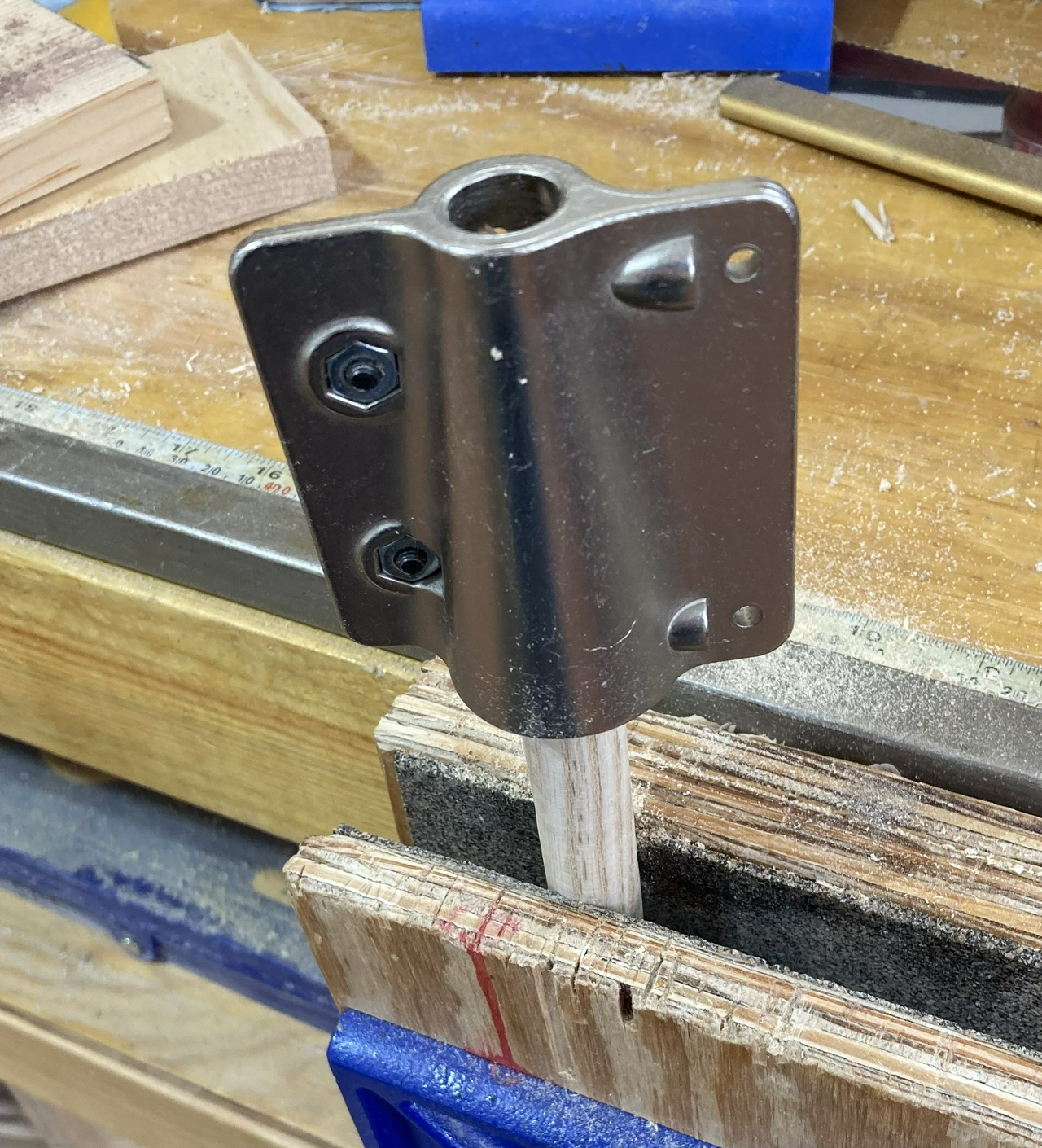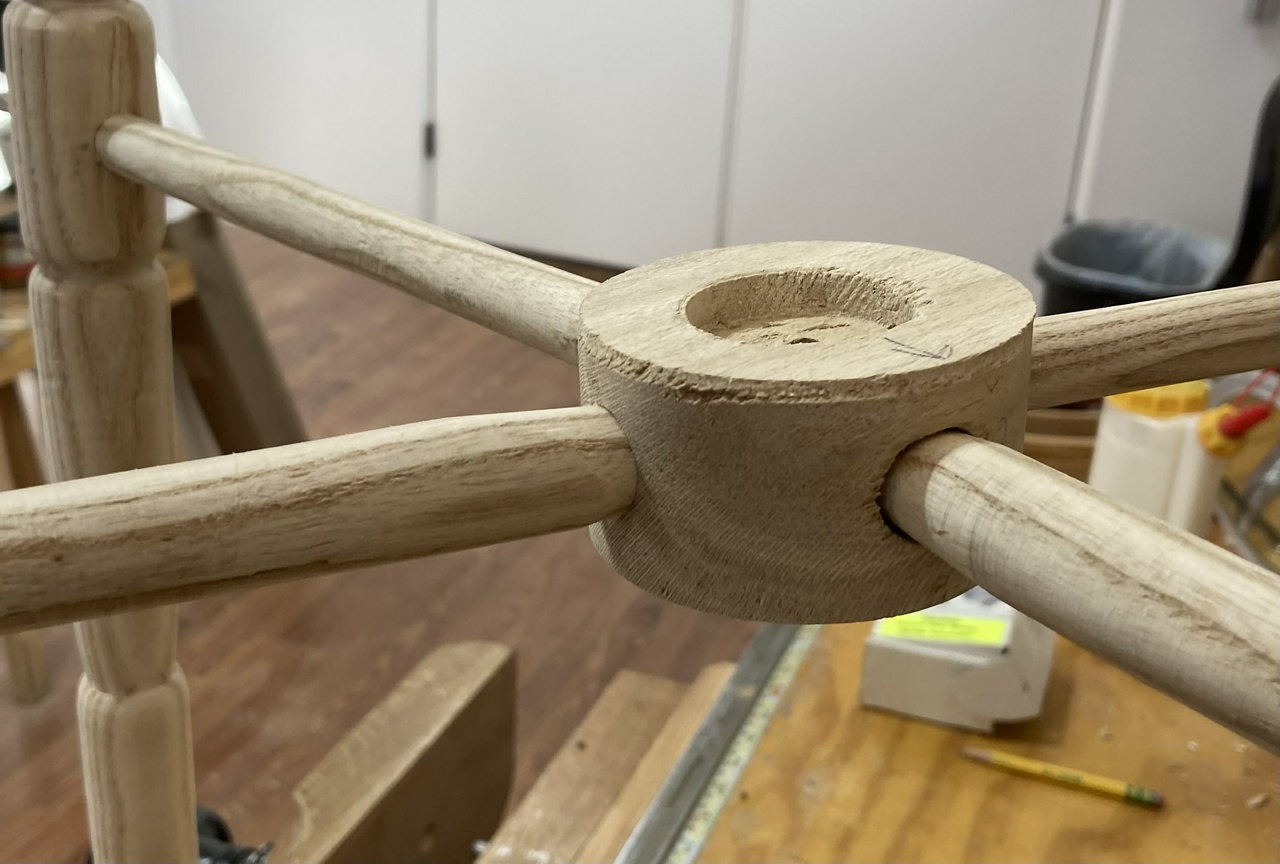I did some work to build the undercarriage. I couldn't decide whether I wanted the stretchers to cross over or meet in a hub, but when I test fit things, it became clear I couldn't have them cross without bending them.
So I turned a hub (from a scrap of salt cedar) for the four stretchers to meet in and bored a couple holes through it.

Unfortunately, I didn't think that the holes wouldn't meet at right angles, but since the table-top is a rectangle, they don't. Oh well. As Bandit says, we have ways.
I found a half-inch dowel in the scrap pile, and used that for alignment. I'll worry about the actual stretcher later. For now I just need something so I can get the leg rotated correctly before gluing it into place.
So, test fit time again. And with the legs in place, I drew lines on the ends of their tenons, perpendicular to the grain of the tabletop, so the wedges won't split that, and sawed in slots for the wedges.

And then it was time to prep some wedges. Cut them on the bandsaw and plane the faces smooth.

Then show them to the holes and trim roughly to size.


Then plane the edge smooth. They don't need to be perfect, but they need to fit, and not be so rough that they'll get hung up halfway in.

Then the glue bottle gets opened, and I'm not smart enough to take pictures while gluing things up, but the process is: glue on the tenon and in the mortise; seat the leg in the tabletop, splaying it as much to the outside as it will go; glue on the wedge, and pound the wedge home (using Earl's dice mallet – thanks again, buddy!). Repeat four times, rinse out the glue brush, double check everything, and then write this up.
I'll get the undercarriage glued up either after lunch or tomorrow. The stretchers will be glued and wedged at the leg ends, and probably just glued at the hub in the middle.

Contents #woodworking #ForgeTable
Discuss...
Reply to this in the fediverse: @davepolaschek@writing.exchange

























